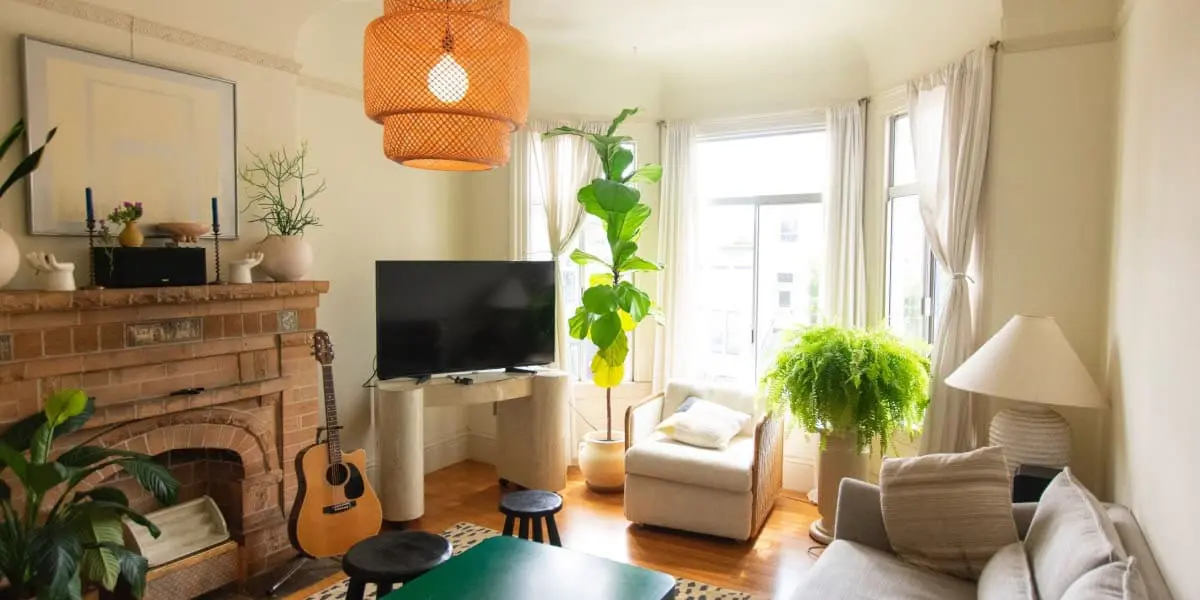How Lighting Affects Paint Color (& Why It Matters)

Choosing the right paint color for your room is simply a matter of finding something that you really like and that works with your decor, right?
Wrong.
The way your space is lit – and what type of lighting you have – needs to play a big role in deciding what colors and shades to use on the walls. Choosing the wrong shade for the type of lighting can lead to the color always looking washed-out and dull.
How Does Light Impact a Color’s Appearance?
Have you ever put on a piece of clothing at home only to discover later, under a different type of light, that that black shirt is actually navy blue?
This phenomenon is called illuminant metamerism and it simply means that colors take on different hues when exposed to different colors of light.
That great shade of muted green could look fantastic in your dining room, but once it’s exposed to the open windows and natural lighting of your living room, it changes character altogether. To combat this, it’s important to view your potential paint colors under a variety of lighting conditions in your home so you can see how the lighting in your room impacts how the color appears and whether you need to switch things up.
For this reason, you never want to simply purchase paint as soon as you see a sample in the store. Always bring home a swatch and look at it in the room where you’re planning to paint!
How Sunlight Affects Paint Colors
Natural light that comes in from windows, doors, and skylights will display the truest version of the color, for better or for worse.
When you’re choosing colors that will largely be viewed in natural light, take the number and size of windows into consideration, as well as what type of daylight the room receives.
Some things to consider when selecting paint colors for a room with natural lighting include:
- Southern-facing windows receive the most intense natural light, which can be harsh in early afternoons. This can cause light neutral or pale colors to look washed out, and can make darker colors more intense.
- Rooms with north-facing windows receive indirect natural light, and the most consistent soft lighting throughout the day. This means light colors are more muted, while darker colors can appear darker.
- East-facing windows receive lots of natural light in the mornings, but lose daylight as noon comes and goes. This will cause dark colors to look more intense earlier in the day, but they can appear drab as the natural light leaves the room.
- West-facing windows don’t receive a lot of early light, but tend to see a lot of rich, warm yellow light as the sun begins to set. On really sunny days, this can cause yellow or red tones on the walls to become overwhelming.
When choosing paint colors in a room that relies on natural lighting, paint a few swatches on the walls and observe them over the course of a few days, at different times of day.
How Artificial Light Affects Paint Colors
Light bulbs are given ratings based on their temperatures. The lower the temperature, the warmer the light emitted by the bulb.
If you have a room with light bulbs between 2,700K and 3,000K, you’ll need to take the light’s warmer tones into consideration. The closer to 5,000K of the light bulbs in your room, the closer to natural lighting you’re dealing with.
Additionally, consider the color rating index (CRI) of your room’s lighting.
On this scale, between 50 and 100, bulbs with a higher number are closer to representing color under natural lighting conditions.
When choosing paint colors, rooms with higher CRI or bulb temperature will display darker paint colors as more bright and lighter colors may appear washed out.
Professional Interior Painting in Metro Detroit
If you’re struggling to choose the right paint color for your room, or you just want someone to help you make the right decision, trust the team at Armor Tough Coatings. We can help you with the entire interior painting process, giving you gorgeously colored walls with less hassle. Call today for a quote!


